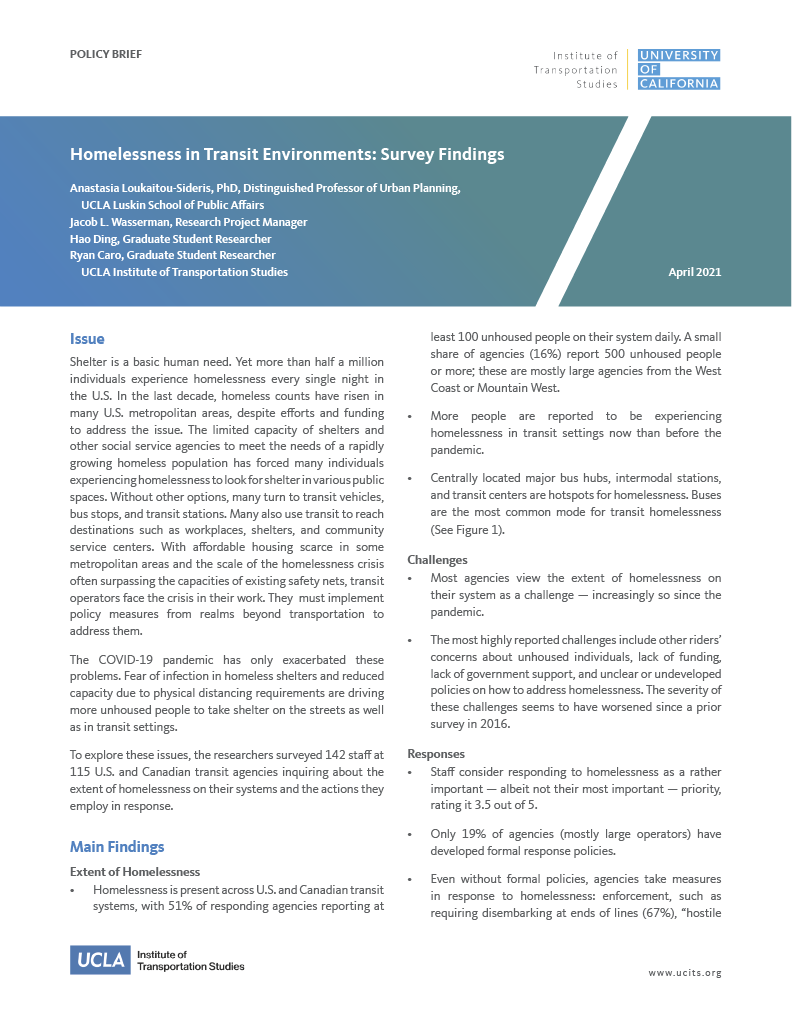Date: April 22, 2021
Author(s): Anastasia Loukaitou-Sideris, Jacob L. Wasserman, Hao Ding, Ryan Caro
Abstract
In the last decade, homeless counts have risen in many U.S. metropolitan areas, despite efforts and funding to address the issue. The limited capacity of shelters and other social service agencies to meet the needs of a rapidly growing homeless population has forced many individuals experiencing homelessness to look for shelter in various public spaces. Without other options, many turn to transit vehicles, bus stops, and transit stations. Researchers surveyed 142 staff at 115 U.S. and Canadian transit agencies inquiring about the extent of homelessness on their systems and the actions they employ in response. Homelessness is present across U.S. and Canadian transit systems, with 51% of responding agencies reporting at least 100 unhoused people on their system daily. Centrally located major bus hubs, intermodal stations, and transit centers are hotspots for homelessness. Only 19% of agencies (mostly large operators) have developed formal response policies. The pandemic has caused 41% of agencies to rethink or develop new policies, 29% to intensify responses, and 29% to start new partnerships and strategies to address homelessness.
About the Project
More than half a million individuals experience homelessness every night in the U.S. With the scale of the crisis often surpassing the capacities of existing safety nets — all the more so since the onset of the COVID-19 pandemic — many turn to transit vehicles, stops, and stations for shelter. Many also use transit to reach destinations such as workplaces, shelters, and community service centers. This project investigates the intersections of the pandemic, transit, and homelessness; the scale of homelessness on transit; and how transit agencies are responding to the problem. All told, centering the mobility and wellbeing of unhoused riders fits within transit’s social service role and is important to improving outcomes for them and for all riders.


